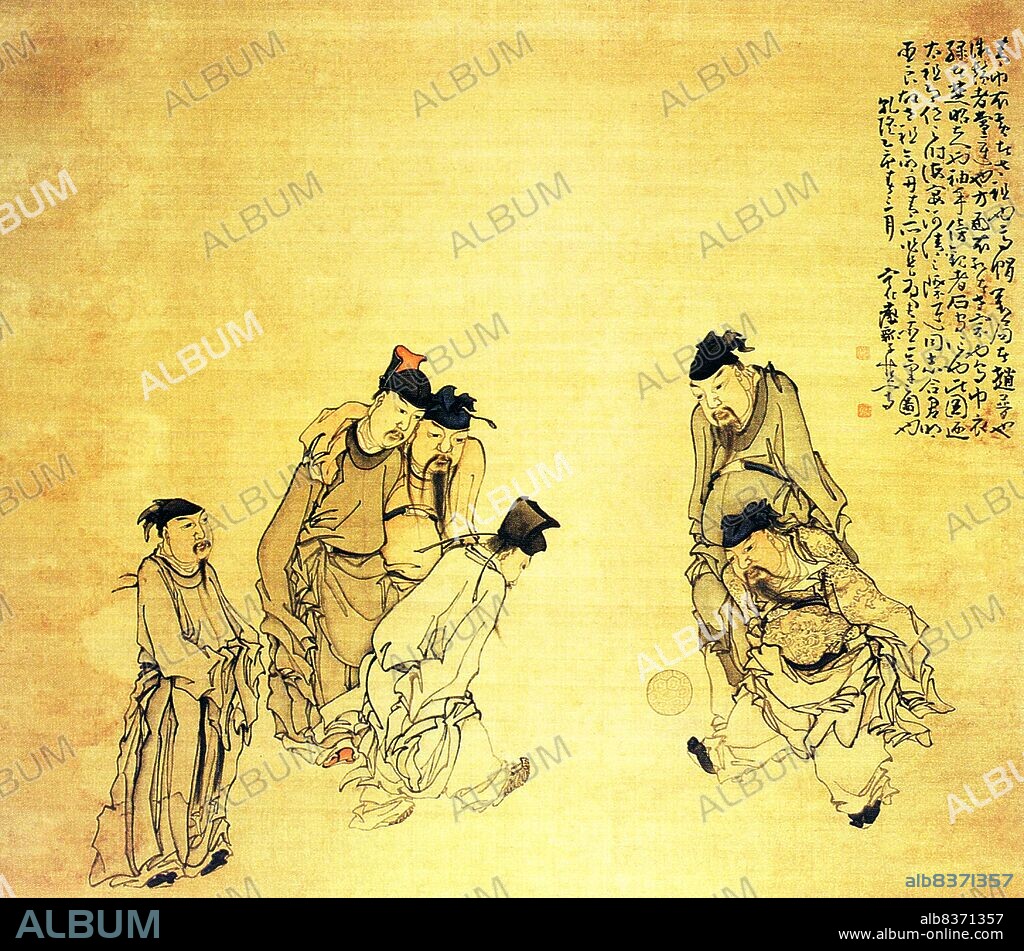alb8371357
China: A group of scholars playing cuju< / i>, an early Chinese version of football. Qing Dynasty painter Huang Shen (1687-1772)

|
Añadir a otro lightbox |
|
Añadir a otro lightbox |



¿Ya tienes cuenta? Iniciar sesión
¿No tienes cuenta? Regístrate
Compra esta imagen.
Selecciona el uso:

Título:
China: A group of scholars playing cuju< / i>, an early Chinese version of football. Qing Dynasty painter Huang Shen (1687-1772)
Descripción:
Ver traducción automática
Huang Shen was a Chinese painter during the Qing Dynasty. Huang was born in Ninghua, Fujian province, to a poor family.
. He began his training under the painter Shangguan Zhou. In the earliest part of his career he excelled at cursive calligraphy and favored a meticulous style modelled after Ni Zan. He became better known as an artistic innovator who was one of the Eight Eccentrics of Yangzhou. When it came to paintings of people he favored images of religious, historic, and common people. His more famous works include The Drunk Monk and Shepherd Su Wu.
. He began his training under the painter Shangguan Zhou. In the earliest part of his career he excelled at cursive calligraphy and favored a meticulous style modelled after Ni Zan. He became better known as an artistic innovator who was one of the Eight Eccentrics of Yangzhou. When it came to paintings of people he favored images of religious, historic, and common people. His more famous works include The Drunk Monk and Shepherd Su Wu.
Crédito:
Album / Universal Images Group / Pictures From History
Autorizaciones:
Modelo: No - Propiedad: No
¿Preguntas relacionadas con los derechos?
¿Preguntas relacionadas con los derechos?
Tamaño imagen:
4396 x 3857 px | 48.5 MB
Tamaño impresión:
37.2 x 32.7 cm | 14.7 x 12.9 in (300 dpi)
 Pinterest
Pinterest Twitter
Twitter Facebook
Facebook Copiar enlace
Copiar enlace Email
Email
